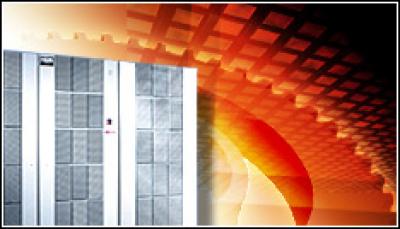HP Launches Low-cost Servers

HP’s new NS2000 could give SMEs the same high performance that larger enterprises get but for a lower price.
Hewlett-Packard is rolling out a new family of low-cost NonStop servers aimed at emerging markets, consolidation projects and small and midsized enterprises.
The NS2000 systems, announced on 16 March, are designed to give these companies cost-effective access to the high performance and fault tolerance of HP’s larger NonStops.
The move echoes what other vendors—in particular, IBM with its mainframes—have done in bringing their high-end hardware platforms downstream to SMEs (small and midsized enterprises).
Among the benefits of the 2U rack-mount NS2000 systems are 24/7 access to data, a platform on which HP NonStop BladeSystem users can build a test and development environment, and a migration path to larger NonStop systems.
The systems are powered by the latest dual-core Itanium processors from Intel, the 9100 series, and integrated hardware and software, which provide application fault tolerance within a single box. The NS2000s complete HP’s multi-core NonStop offerings.
A key to the news servers is the compatibility they offer, said Randy Meyer, director of NonStop product management for HP’s Business Critical Systems. They run the current dual-core Itanium chips, and will be able to run the quad-core and eight-core Itaniums when they come out, Meyer said.
Companies have a choice of four- and eight-core hardware base bundles, with 8 GB or 16 GB of memory per processor. There also are AC- and DC-powered versions.
In addition, the NS2000s are software-compatible with other, larger NonStop systems, he said. The only difference is the NS2000s don’t scale as high as the larger NonStops do. At just more than $100,000, (£70,712) an NS2000 box gives SMEs the same capabilities that larger enterprises pay millions for in bigger boxes, the company claims. Exact UK pricing was not available at time of writing.
“The smaller guys are looking for the same capabilities,” Meyer said. “For instance, hospitals. The smaller ones have the same needs as the bigger ones. They want 100 percent fault tolerance.”
The servers also offer economic advantages in power, space and cost savings, an important consideration for companies struggling through the recession, he said.
“New products, new applications, new ‘whizzy’ features are tough to sell because people are hunkering down,” Meyer said.
HP’s move with the NS2000s mirrors what IBM is doing with its System z mainframes. IBM in October unveiled the System z10 Business Class mainframe, a lower-cost and smaller version of its $1 million System z10 released in February 2008.
Starting at $100,000 (£70,712), the System z10 Business Class is targeted at smaller enterprises and mid-sized companies looking to consolidate workloads—particularly Linux workloads—off multiple x86 systems. And like HP, IBM views the smaller mainframes as a way of expanding its customer base, including in emerging markets such as Eastern Europe, the Middle East and Africa.
In a similar vein, Stratus Technologies officials are hoping that the free VMware technology they started offering with their Intel-based fault-tolerant ftServers March 9 will convince some SMEs to buy their systems.
Charles King, an analyst with Pund-IT Research, said technology starting out on the high end and then cascading down to smaller companies has been a common theme in the IT industry over the past four decades. In IBM’s case, bringing the System z mainframes to smaller enterprises has opened up new markets, particularly in places like China and India, as well as with older mainframe users who aren’t planning to expand to the more expensive System z10, King said.
“I expect that HP has similar, older NonStop customers who [the vendor] can keep with [the NS2000],” he said. “Moving downstream gives [HP] the ability to engage these customers.”
Both IBM and HP have been able to drive their high-end systems down to the SME level by leveraging more standardized hardware, which in turn has enabled them to keep their development costs for hardware low and to innovate on the software and pricing, said Gordon Haff, an analyst with Illuminata.
In HP’s case, the real step forward for the NonStop systems—which HP acquired when it bought Compaq in 2002 for $19 billion (£13bn)—came when it standardized the platform on Intel’s Itanium processor, Haff said. Doing that freed up HP to find ways to bring the NonStops to a larger audience.
“Until they could put NonStop on a relatively volume platform … it would have been very difficult to mainstream NonStop,” he said.